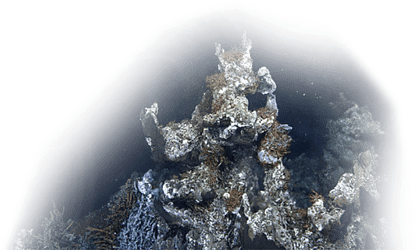Researchers are investigating the earthquake-prone zone of the Cascadia Margin off the coast of Vancouver Island to better prepare local communities for future earthquake and tsunami risks. The CLOCKS expedition (Sept. 13 - October 27, 2022) is led by GEOMAR Helmholtz Centre for Ocean Research Kiel and uses the German research vessel SONNE. Partners include Ocean Networks Canada (ONC), University of Victoria, Geological Survey of Canada, and Japan Agency of Marine Science and Technology.
Earthquakes with magnitudes greater than 8.5 in so-called subduction zones where tectonic plates shift and collide are among the most dangerous marine natural hazards worldwide. The Cascadia Subduction Zone stretches from northern Vancouver Island to Northern California. In this location, as the incoming oceanic plates (Explorer, Juan de Fuca, and Gorda) slide below the continent (North American Plate), geohazards like earthquakes and tsunamis can occur. Because of the high population density of this coastal region–which is home to cities including Victoria, Vancouver, Seattle and Portland –the hazard potential is very high.
Credit: U.S. Geological Survey
The CLOCKS expedition team is investigating the Canadian part of the Cascadia Subduction Zone. They will use a combination of scientific tools and techniques to map the deformation of the sea floor caused by earthquakes; study seafloor sediment temperature and associated drainage processes; and measure the conductivity of rocks beneath the ocean. This research will improve our understanding of the hazard potential in the coastal areas of British Columbia and contribute to early warning systems for earthquakes and tsunamis.
An improved understanding of the subduction zone will help determine the potential magnitude of a future earthquake, the strength of ground shaking, as well as size and extent of a potential future tsunami. A small component of this project is dedicated to obtaining properties of the incoming ocean crust before it enters the earthquake zone, and to assess its potential for safe and permanent storage of carbon dioxide as a climate mitigation solution - a separate project that is being led by ONC.
Eight marine mammal observers will accompany the trip and ensure through intensive 24/7 monitoring that seismic measurements are only carried out if a sufficient distance to the animals is maintained.
Contacts:
For media inquiries about the CLOCKS expedition, please contact Ann Kristin Montano (GEOMAR Helmholtz-Zentrum für Ozeanforschung Kiel) at 0151 74374850 (c), +49 431 600-2811 (tel), or amontano@geomar.de. More info at the GEOMAR website.
For enquiries about carbon sequestration climate mitigation research, please contact ONC Communications at onc-comms@uvic.ca.
